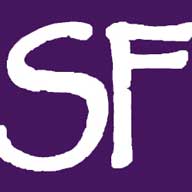From the earliest settlers to very recent times agriculture has been a primary industry in Fuerteventura. The various tools of this activity are still to be found on the island. Donkeys are abundant and there are more camels, even these days. They were always very crucial to any farm, to pull the ploughs and to grind the corn. The Museo del Grano (the grain museum) in La Oliva, close to the church, has a large collection of farm implements. The tools of the pre-conquest Majos would have been stone or bone with wooden handles as metal of any kind was unknown on the island. These tools would have a double use: in agriculture and as weapons.
After the 15th century, tools were made here but they were very expensive and therefore were repaired many times, often remodelled and reused for some other purpose. A Trillo was used to grind corn since the Bronze Age. It is a very expensive, yet essential farm tool. It was towed behind the camels to separate the chaff from the wheat. The stones were fitted into slots in the face to grind the wheat.
Camels were used but they will stop to poo! whereas a donkey just keeps going! (this would result in the flour to have a distinctive nutty flavour…) As the Trillo was made of imported hardwood they were never thrown away but re-used.
This picture shows a wheelbarrow from around 1860 made from a Trillo, itself already, very old. The plough was extremely important and would have been hired out or shared by a group of farmers. A plough will eventually wear out to nothing.
The animals were led by yokes and many still exist and are even used today. The animal was directed by pulling on the ropes attached to the rods. As most implements were made of wood, they have fallen in time to the many hungry bugs of the island and the fires needed before gas arrived.
Much of the agricultural output of Fuerteventura was dedicated to wheat. The grain needed to be milled; so many windmills were built and they still can be found in windy places all over. Other crops like maize for example were ground into paste in a small mill at home to make Gofio, a staple food when baked and made into the still popular, bread and cakes. Potatoes were also very much a part of the diet. Here is a tool to extract potatoes and root vegetables from the ground.
Many pieces look strange to us because they were reused many times and are not produced anymore today. Unless you have a close look at the old fence or gate on the goat pen. The beam in an old Finca, the lid of a well, there you will see the old tools of the Island. All these artefacts are on display at the Tindaya Arms, in Tindaya and Bernie will be pleased to explain more about this fascinating subject.
Phone 928 865 595. or contact: www.tindayaarms.com for more info.
